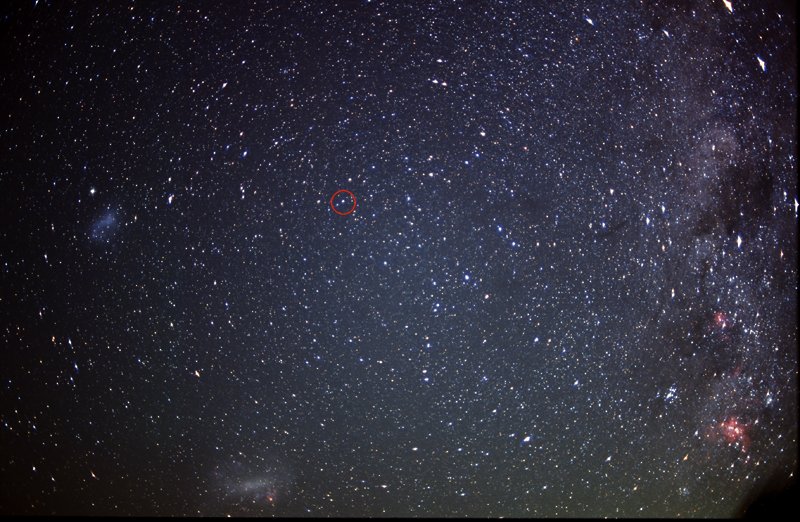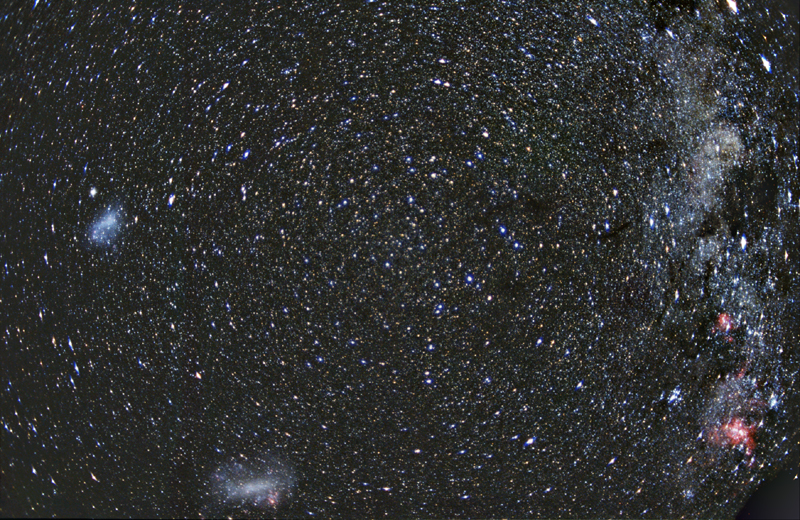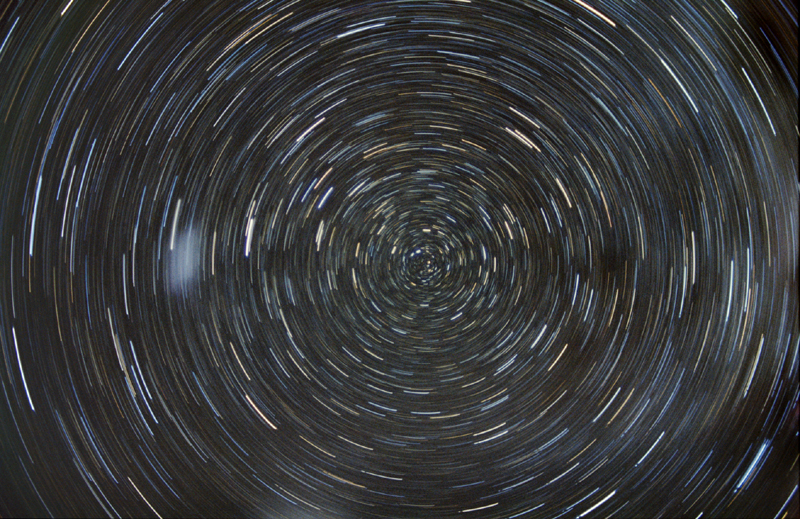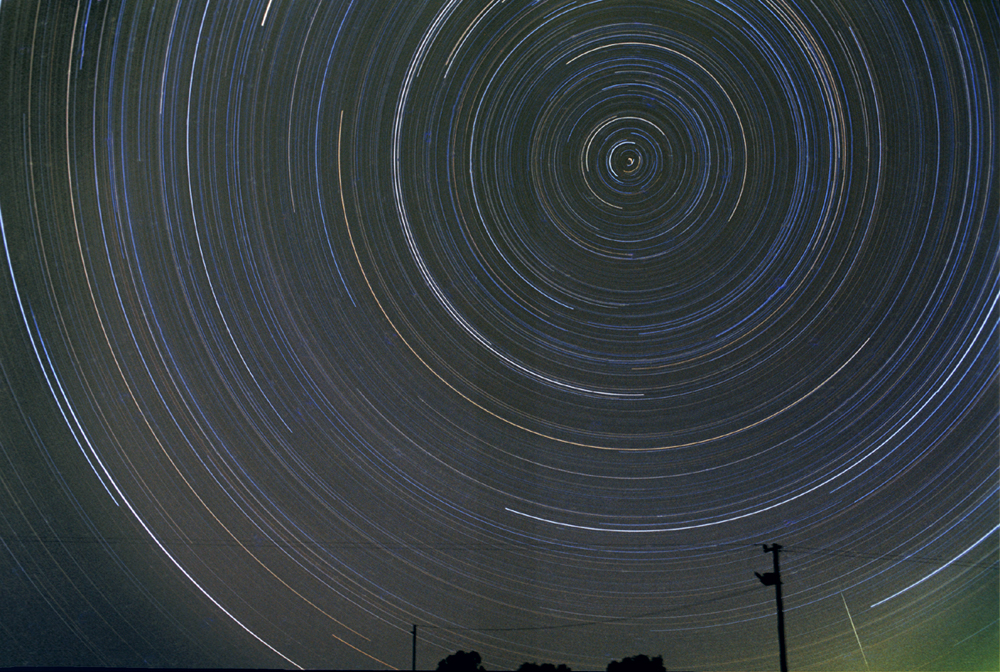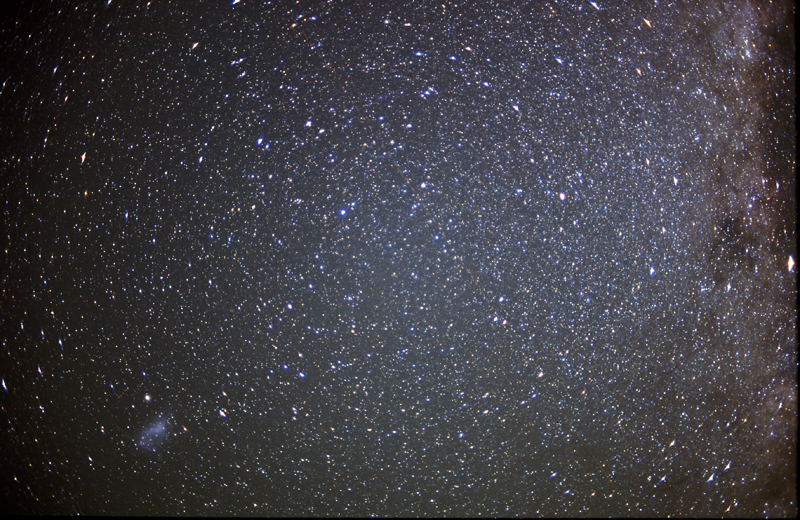
35 minutes exposure, Fuji Superia 200 film. 35mm f/2.8 Canon lens.

The South Celestial Pole region of the sky appears to the naked eye to be rather barren compared to the North Celestial Pole region. However, this is not really the case, particularly under dark skies. Although there is no bright star marking the pole like Polaris marks the northern pole, there is a 5th magnitude star, sigma octans, that is actually closer to the pole than Polaris is to the northern pole. This star is quite easy to see under dark skies. This star is indicated by the red circle in the photograph below.
